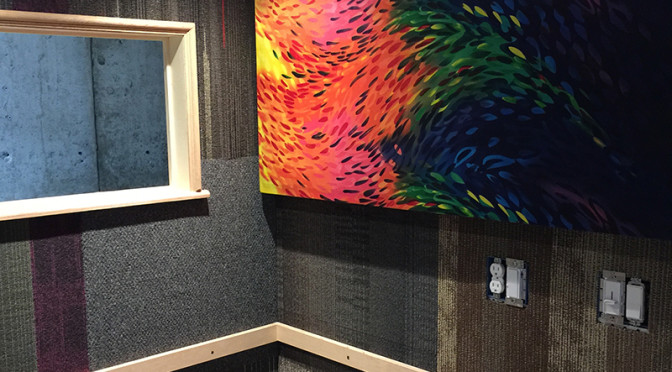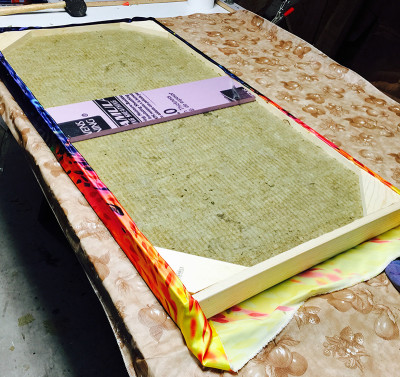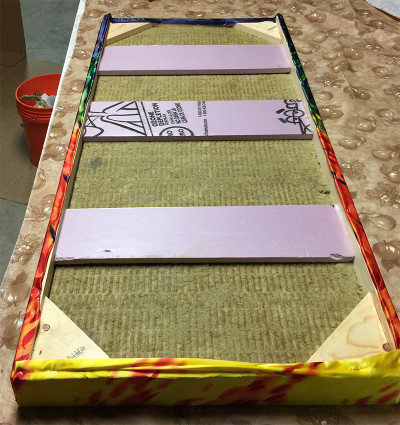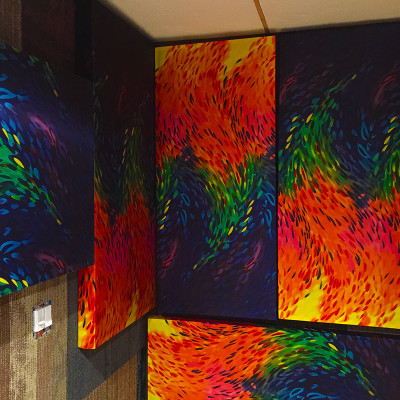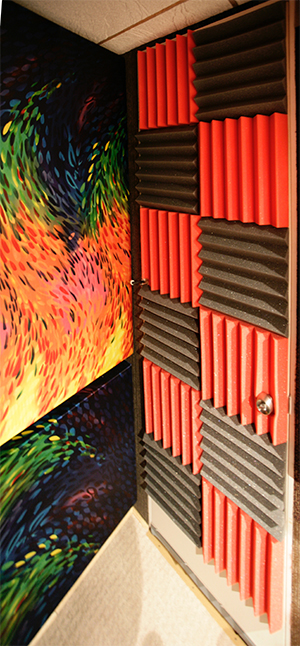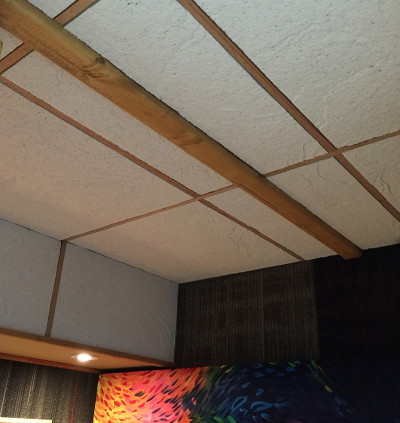The addition of sound absorbent panels, especially in areas of high reflection, is a long understood concept. There is no reason that your panels should not also be attractive. You may read that the ideal surface to prevent unwanted sound reflection should be matt or rough. Likely true enough. However, a gay, bright, cheerful panel will enliven an otherwise dark and drab interior and the loss of absorbent power is minimal, plus a smooth surface will not attract dust.
To built a moveable, yet efficient panel is simple. Start by constructing a frame of 1 x 4 (nominal) pine, braced at the corners and held together with glue and 2” staples. Your piece of insulating fiber should be a tight, close fit all around. I added a simple piece of blue board in the center to prevent bowing inward. Place this assembly on your chosen fabric and staple the edges accordingly. I hung mine using simple, heavy duty picture frame hangers.
For the panel needed to cover the ventilation fan, you should notice that the frame is deeper on three sides, allowing air to move under the assembly from the bottom up. An effective but simple trick.
Once all the panels are hung, you will notice a dramatic change in the room sound reflection.
Don’t forget the door, which badly needs some acoustic deadening, Also, you should be meticulous with the weather stripping around it from top to bottom. No light should be seen around the door when it is closed. If you can see light, you can hear sound. I covered the door with foam panels, attached by spray-on adhesive.
And of course the ceiling. I used a thick, drop-in style of acoustical tile (which has high ratings for sound absorption), used contact adhesive to mount them, and trimmed out with stained pine. Above and behind the tile is additional sound absorbent insulation.
Next up will be finishing touches.
Alexander Francis

